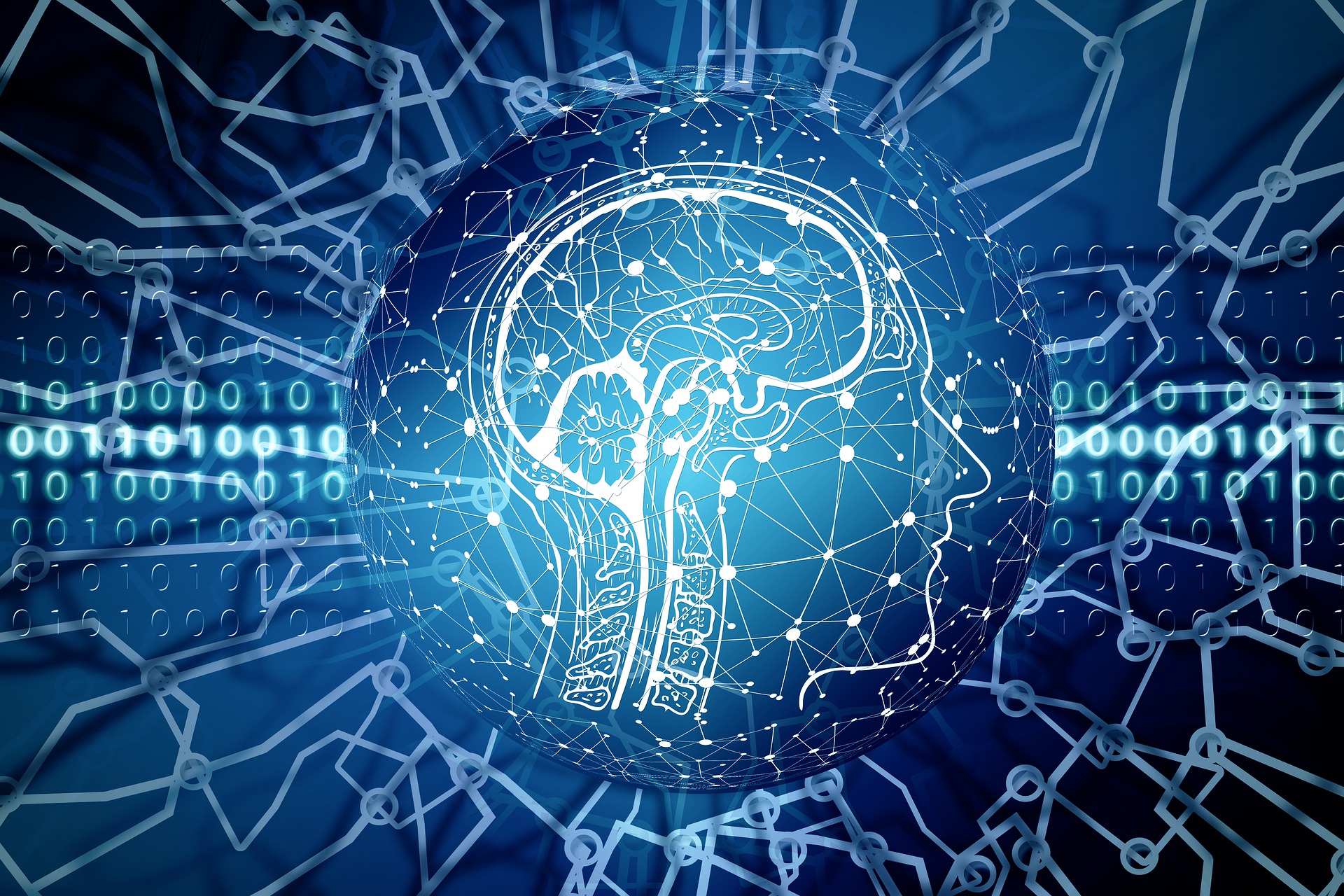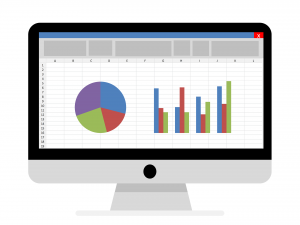Note : This page has been translated into English from French by a machine translation tool
Artificial intelligence… Who hasn’t already heard of it ? If there is today a subject that is the subject of many fantasies and speculations, it is this one. And for good reason, it has already been around for many years and its performance is constantly growing. We are not necessarily aware of it, but we call upon its services every day and we find it today almost everywhere in our daily lives.
Whether in our smartphones, where it is used to operate our voice assistant and the predictive input tool for example, or on the Internet and in our connected TV set when videos or music are suggested to us based on what we have already listened to or watched, there is no shortage of cases where artificial intelligence is used. The subject is extremely complex, vast and subject to interpretation with regard to the very notion of intelligence. So we are going to try to see what artificial intelligence as we know it today is, what is the principle of its functioning and what are today and can be tomorrow its possible applications…
What is artificial intelligence ?
Artificial intelligence we could define it as the set of tools and techniques used to produce, through computers or more generally machines, actions that require some form of intelligence to be performed. This is made possible by the development of algorithms, a series of programmed instructions, executed by computers that perform tasks that only a human being would theoretically be capable of, thanks to what we can call his intelligence.
There are several ways of doing this, or rather several ways of programming these machines in order to achieve this result. Indeed, we cannot talk about artificial intelligence without talking about machine learning in French.
Machine learning
Machine learning consists in using the statistical approach of a problem in order to make a computer capable of making predictions in a specific domain from its experience. But as it is not a living being, this experience it is necessary to bring it to him. Indeed, providing a computer with a large amount of data on a defined subject and the means to exploit it, allows it to deduce results or actions in cases or circumstances that it does not yet know, simply by means of mathematical calculations.
This method requires a very large amount of statistical input data that can be derived in some cases from actions or choices made by human beings in order to establish a link between these elements, obtain an evaluation of the results and thus determine the most opportune action, outcome or decision possible in a given new situation. In theory, the greater the amount of data, the more accurate the predictions and actions will be. In the same way that if you want to determine as accurately as possible the probabilities of falling on each side of a die from a series of rolls, it is advisable to make a very large number of rolls.
In order to complete this definition, it is necessary to introduce two additional notions that are also found when talking about machine learning.
Supervised learning
As we said in the context of machine learning, it is a question of having a computer analyze a large amount of data so that it can deduce relationships between them. If we provide data that can be considered labeled to this system prior to its analysis, then we are talking about supervised learning. In order to allow the program to identify cause and effect relationships in a data bank, we will provide it with a large number of examples of combinations and, above all, we will provide it with the results obtained for each one. The goal here is to determine which causes lead to which consequences and to enable the program to predict with the highest possible probability what the outcome will be when we present a new case or combination of data in the future.
In order to better understand the principle, we will discuss an example of supervised learning in health care. Imagine that you provide a computer with a series of indicators, extracted from analyses performed on a set of patients, and then tell it which patients have a specific disease and which do not. It is this last phase that corresponds to labeling. The goal is then to let the computer identify tangible elements that allow us to link certain indicators with the patient’s state of health and thus predict with the best possible reliability whether a new case that we will present to him in the future presents the criteria of a sick patient or not.
However, in some cases it is not possible to guide the computer because we are looking for correlations among a set of raw data. Therefore, we will provide them to the computer without guiding it to the type of result we are trying to obtain. In this case, learning is then said to be unsupervised.
Unsupervised learning
As you will have understood in unsupervised learning, the computer is not guided to a type of result to be obtained as in the case of sick or non-ill patients presented earlier, but is left to make relationships and identify in a certain volume of data categories that are as precise as possible. Here, the results are obviously more random and the results can sometimes be full of surprises.
Again, let’s take an example of unsupervised learning to better understand the principle. It is possible here to talk about the case of suggestions on search engines, whether it be for information, video or music searches. You are going to provide arbitrary data about users (age, geographical location, content viewed, etc…) and you are going to let the algorithm group these individuals by categories to perhaps make a link between the age of the users and the volume of searches for videos related to sports for example. Here, you don’t tell it that you want to find elements that will allow you to know what are the characteristics of an individual that make him/her interested in sports-related videos but you let it see if it itself finds a link between these two types of data.
Are you beginning to understand the interest of these algorithms and how it all works ? Let’s take another well-known example when we talk about artificial intelligence. Imagine that you want to teach your computer to play chess. Within the framework of machine learning, you are going to teach it the rules of chess but above all you are going to provide it with data from a very large number of games played by professional players. Thus, the computer, thanks to its computing power, will analyze this data. This will allow it to determine, from several moves played differently by players in the same or similar situations, which move is optimal. According to the impact that each of these moves has had on the rest of the game, it will give them a kind of score. All he has to do is choose the move with the best score, which is then considered optimal. Thus, as soon as it is brought to play a game, the computer only has to go and draw from this database the optimal moves for each turn and play them. The computing power and memory make the difference here compared to a human player.
Unfortunately, this method has an obvious disadvantage. It requires a large database and is quite limited in terms of applications. This is the reason why other ways of providing “experience” to the computer have emerged. Among them, we can mention deep learning in French.
Deep learning
Deep learning is a specific solution for more complex tasks. It consists in the creation of artificial neural networks, a bit like a human brain can be composed of neurons connected to each other, which are more efficient to perform these tasks. It is no longer a question of providing the machine with statistical data in order to determine actions from them, but of letting the machine build up this data by learning by itself.
Reinforcement learning
In order to build itself a database and build a model on its own, our machine will act from basic operating rules and learn by a trial-and-error method. For a given situation, it will have to evaluate the performance of each of its actions, and it is by repeating a large number of times that it manages to obtain an optimal result. This method is called reinforcement learning.
Let’s go back to our previous example. Here we will simply indicate the rules of chess to our computer. It will then practice by playing a very large number of games against itself in order to always achieve the same result, i.e. to evaluate the optimal moves in each situation.
But deep learning does not stop there. Today, it no longer allows you to work not only on alphanumeric data that are a priori more natural to analyze for a computer, but also to work on images with excellent results. Only a complex neural network can determine the main visual characteristics of a given object in order to be able to extract them from a new image and thus be able to recognize it. This is what today allows algorithms to identify an object in an image and even to describe what it sees in the image.
As you will have understood, artificial intelligence uses the same principles we use to learn. Indeed, we can either imitate better performing people in a field in order to improve our own performance or we can try to perform an action a large number of times trying to determine the optimal ways to act according to the results produced. This is what we do when we train. On this point, however, artificial intelligence has an advantage over us. It uses the colossal and ever-increasing computing power of computers. It has the ability to do far more testing than we do, and thus to build up an experience and training that a single human being will never have the time to acquire in his or her life. But is this artificial intelligence really an artificial intelligence ?
Does artificial intelligence live up to its name ?
To answer precisely this question, it is necessary to refer to the philosophical and scientific definitions of the notion of intelligence and that is not the subject here. However, we can evoke some tracks of reflection. Indeed, artificial intelligence, as you will have understood it, evolves and performs, at least for the moment, only in very specific fields. We speak then of weak artificial intelligence. But it is not yet a question of obtaining machines capable, like us, of surviving in a hostile environment, of functioning alone, of appreciating situations thanks to emotional faculties and even less of having a conscience.
To sum up, each artificial intelligence algorithm is developed in order to excel in a particular field or at least to become much more efficient than us in this field and this with a very low learning curve. This is possible thanks to two main elements that are extremely dependent on the computing power of computers :
- its ability to gain experience and sampling very quickly by performing a lot of tests in a very short period of time
- its ability to analyze existing data and derive relationships and a model very quickly
So, if we have seen that artificial intelligence is capable of assisting us in very specific fields, what is its use today and what will it be able to help us tomorrow ?
Examples of application of artificial intelligence
Artificial intelligence can be found in many fields and is already present today, as we mentioned earlier, in many of the systems we use. In fact, any object connected and integrating a computer system capable of executing algorithms is likely to embark artificial intelligence. Thus, as we have seen in our example, today we have artificial intelligence that is extremely powerful, even unbeatable for a human in the field of gaming, whether it be board games or even, for some time now, video games.
We also find today very powerful artificial intelligences in the field of art or creation. Indeed, some algorithms are today capable of creating paintings, writing books or composing music with a rather striking level of performance. Artificial intelligence is also used in image processing, desktop publishing (DTP), video editing, and compositing software such as Adobe Sensei (see our article on Adobe Sensei, artificial intelligence to serve creation for more information), the AI module in the Adobe Creative Cloud suite that helps users improve performance while reducing the time they spend on certain tasks.
Artificial intelligence nowadays makes it possible to recognize objects or faces in an image. Thus, it can be used in the fields of security in order to carry out facial recognition of individuals, or in the development of autonomous cars capable of identifying objects present in their environment in order to avoid them. The use of artificial intelligence to analyze images also finds applications in the field of health. Indeed, the performance of computers in the analysis of X-ray images to identify pathologies is in some cases superior to that of even the most experienced doctors.
As we mentioned, our everyday companions, our smartphones, are already equipped with artificial intelligence. Indeed, when you’re writing a message and it only offers you the words you’re going to enter next, or when you ask the voice assistant what the weather will be like the next day, we are indeed in the presence of features that can fall into the category of artificial intelligence. As we’ve also mentioned, when you watch videos or listen to music on online streaming platforms, the videos or music that are suggested to you are suggested to you based on what you’ve already viewed. Thus, an artificial intelligence is able to build a portrait of you based on what you have watched or listened to and then determine what you are likely to like as well. This can also be used in the field of marketing, in order to adapt the communication campaigns that are addressed to you according to your profile and what you are likely to like and therefore to buy.
Finally, the artificial intelligence used in conjunction with Big Data makes it possible, thanks to data analysis, to envisage being able to reduce energy consumption on a large scale, or to anticipate the risk of epidemics or the occurrence of criminal acts with a very high level of efficiency.
Artificial intelligence is undoubtedly one of the major technologies of our future. But it is extremely difficult for us to predict to what extent it will disrupt our lives. While it is certain that it will provide us with considerable assistance in many areas, we can hardly estimate to what extent it will be able to replace us. Will we all have a virtual assistant in our pocket tomorrow who will be able to interact with us and the outside world ? Will we all have a fridge at home that will order itself according to the amount of food left inside and taking into account our tastes and desires ? Or will our garage be home to a vehicle that will be able to book a hotel and take us alone to our vacation destination ? So many questions which, while not promising us the world we will know in the future, allow us to realize just how great its potential and scope are…









… [Trackback]
[…] Read More Info here on that Topic: soft-hardware.fr/en/artificial-intelligence/ […]
… [Trackback]
[…] Read More on to that Topic: soft-hardware.fr/en/artificial-intelligence/ […]
… [Trackback]
[…] Information on that Topic: soft-hardware.fr/en/artificial-intelligence/ […]
… [Trackback]
[…] Read More Info here to that Topic: soft-hardware.fr/en/artificial-intelligence/ […]
… [Trackback]
[…] Find More on on that Topic: soft-hardware.fr/en/artificial-intelligence/ […]
… [Trackback]
[…] Read More on that Topic: soft-hardware.fr/en/artificial-intelligence/ […]
… [Trackback]
[…] Read More on on that Topic: soft-hardware.fr/en/artificial-intelligence/ […]
… [Trackback]
[…] There you will find 42439 additional Information on that Topic: soft-hardware.fr/en/artificial-intelligence/ […]
… [Trackback]
[…] There you can find 92007 more Info to that Topic: soft-hardware.fr/en/artificial-intelligence/ […]
… [Trackback]
[…] Here you can find 85304 more Info to that Topic: soft-hardware.fr/en/artificial-intelligence/ […]